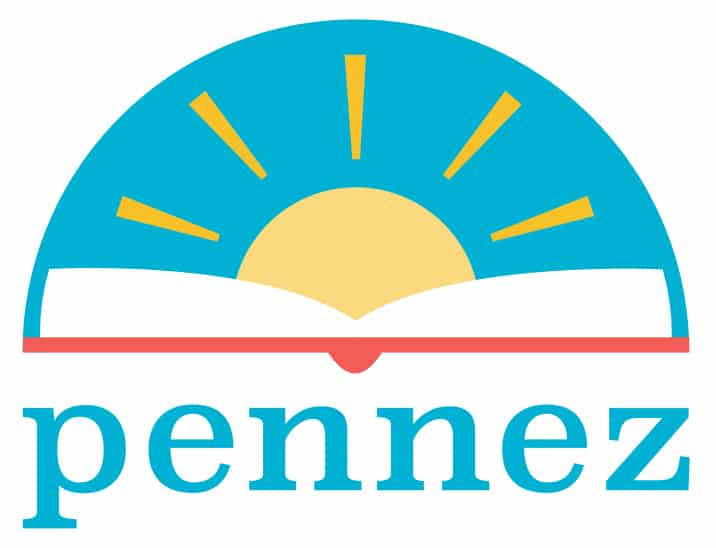tips for educators
These tips are provided as suggestions on improving the literacy rates of youth within your classroom. These tips are listed from real-world and research-based information. All in all, whatever your approach is, your essential goal should be addressing the individual child’s needs. If you would like to speak further about potential collaboration, please contact us.
Determine their reading level
You can determine their reading level by
- Running Records
- Progress Monitoring
- Unit Exams
- Observing
It is important to organize how you will provide summative and formative approaches to learn about your child’s reading level.
Local Libraries or Librarians
Librarians have a wealth of book knowledge. They can assist you in many ways, all that you have to do is just ask. Work closely with them so you can have a rich library of books for your classroom and for your child.
Find Books Your Students Will Love
No matter the age of your students, they need to know what types of books they like to read. If they gravitate towards the same genre for months and months, then try to find books with similar topics, the nonfiction or fiction framework. However, it will need to be a “partnership” where your students will need to select books as well.
Teach Critical Thinking
Critical Thinking Strategies can be applied to any different type of book and even to different subjects. If you don’t know where to start, start off by teaching them different questioning strategies.
Technology
Technology is a great tool for collaboration, expansion of ideas, communication, and so much more. However, the use of technology should not be the end goal. Technology when it comes to literacy should be used to reinforce, enhance, define, and communicate ideas. Of course, utilizing technology the way that you see fit is in because you know the students in your classroom the best.
Teaching Strategies
Small Group Reading

Small group reading gives the educator a better chance to learn about his or her student needs and to ensure that the instructional materials support student outcomes as well. As an educator, you know that all students read at a different levels and small group reading gives you as the educator the chance to ensure that you can provide content that supports their instructional level.
What Usually Happens
- Students: 2-6 students will visit with you for 5-15 minutes.
- Other Students: Working in small groups at “stations.”
- Materials: Students bring a notebook, writing utensil, and even the book he or she is reading.
- Educator: Gathers books or content to reinforce a skill. For example, comprehension, vocabulary, guided practice, questioning techniques, nonfiction text, and etc. Educators can follow their curriculum outcomes, but small group reading can hone in on a child’s skill.
Benefit: Small group reading gives you the ability to expand on student outcomes without having to remove your school’s policy and curriculum expectations.
Grouping Examples
Utilize data from informal testing (observations, homework, journaling) and formal testing (standardized tests, weekly exams, and notes from written observational testing required by school).
- Organize: Have a folder, binder, or a bin to keep notes & data about your students.
- Making Groups Flexible: Write their names on sticky notes, note cards (magnet strip on back, Velcro, or tape).
Grouping: Divide groups into 4-6 students and having the names with sticky backs can make it easier for you to move their names into another group when groups should shift / change.
Be Flexible! Remember, students do not need to be in the same group all year. Groups should be flexible, and shift based on their needs. You can give names of groups in colors, general shape names, or students can give names of the groups. Normally 4-6 students can work on a center at one time. Do not try to make this a worksheet farm. Establish clear goals about what students will be doing, and have materials organized and prepared.
Literacy Center Topics
| WRITING | LETTERS OR VOCABULARY | TABLET OR COMPUTER | AUDIO BOOK |
| READING SILENTLY | READING WITH PARTNER | READING STRATEGY PRACTICE | ART ACTIVIT |
| POETRY | DRAMA | BIG BOOK | CURRICULUM ACTIVITY |
Suggested Resources & References for Literacy Centers & Small Group Reading
Diller, D. (2003). Literacy Work Stations Making Centers Work. ME: Stenhouse.
Southall, M. (n.d.). Differentiated Literacy Centers. NY: Scholastic Teaching Resources.
“Diller, D. (2007). Making the Most of Small Groups, Differentiation for All. ME: Stenhouse Publisher.
K-2 lesson from Benchmark Education
Guided Reading

Guided Reading is another method to help the educator monitor groups of children. The difference is that content is preselected from a set curriculum or a set “Leveled-Books” such as from Scholastic or Reading A-Z. Guided Reading is more teacher-led where educators are asking questions, monitoring student behaviors, giving explicit instruction, and making learning fun. The difference of Guided Reading:
- Students read a text that is slightly higher than their comfort level.
- Teacher coaches students as they read orally.
- Teacher introduces new fluency AND comprehension strategies.
- Emphasis is reading more challenging books overtime.
What Usually Happens
- Students: 2-6 students will visit with you for 5-15 minutes.
- Other Students: Working in small groups at “stations.”
- Materials: Students bring a notebook, writing utensil.
- Educator: Gathers books or content to reinforce a fluency or comprehension skill. Lessons might not actually emphasize explicit development of vocabulary, phonics, or phonemic awareness.
Benefit: Educator’s goal is to move students further along in text complexity.
Guided Reading Lessons
- Familiar Rereading-Observe and make notes while students read books from earlier guided reading lessons.
- Book Introduction-Support students previewing the text.
- Guided Practice-Students read independently or chorally. Teacher inputs as needed. Teacher asks comprehension questions while students are reading.
- Teacher Point-Offers some suggestions and demonstrates thinking & reflecting skills.
Word Work-Study words that were in the book.
Grouping Example
- Similar to Small Group Reading
Overview on Scholastic.com
Suggested Resources for Guided Reading
Fountas, I., & Pinnell, G. S. (2016). Guided Reading, Second Edition: Responsive Teaching Across the Grades(2nd ed.). Heinemann.
Schulman, M., Payne, C., & Carleen, P. (2000). Guided Reading: Making It Work: Two Teachers Share Their Insights, Strategies, and Lessons for Helping Every Child Become a Successful Reader (Teaching Strategies). Scholastic Teaching Resources.
(Ed.). (n.d.). Read About Best Practices in Small-Group Reading. Retrieved from https://benchmarkeducation.com/best-practices-library/small-group-reading.htm
Whole Group Lesson vs Mini Lesson

Minilessons have a tremendous difference over whole group instruction.
What is a Minilesson?
A minilesson occurs when a SPECIFIC concept related to reading, writing, or even math needs to be reintroduced, introduced, or used as a way to reflect. Mini lessons are intended to be taught quickly and easily. Mini lessons should not last more than 15 minutes.
Literacy Center Topics
| ENTIRE CLASS | SMALL GROUP | ONE STUDENT |
During A Minilesson
Minilessons should focus on ONE KEY IDEA. Teachers are teaching based on the difficulty of the student’s abilities and where connections were not made previously.
“Yesterday we talked about asking big and little questions by starting off with “Why, What, or How?” I noticed that most of your questions were small such as “What did the boy look like?, Did you like the story?, and “How did it look?” Let’s review how to ask big questions where you could have said.
| Little | Big |
|
What did the boy look like? Did you like the story? |
Why was the boy feeling sad? What was your favorite part in the story? |
| How did it look? | What would you change about the image? |
After Minilesson
After introducing the concept, have students practice that SPECIFIC skill. Assess to ensure that all or most of your students understood. Remind them that they will practice that skill in a center, and STOP.
Goal of Minilesson
Minilessons should not be complex, should not require students to design or create a monumental item. Your goal is to introduce something that can be assessed quickly to reinforce a concept that many students need to know about.
Whole group lessons are intended for the entire group of students, and have more components involved than a minilesson.
What is a Whole Group Lesson?
A whole group lesson can be designed to introduce a concept one time or to introduce a concept multiple times. A whole group lesson is designed with:
- Objectives
- An Introduction
- Day(s) of Study
- Materials & Supplies
- Student Groups
- Instruction
- Assessment
A whole group lesson is what you are probably more used to where you have to ensure student learning.
Literacy Center Topics
| Entire Class |
After Whole Group Lesson
Your goal is to ensure that students produce tangible outcomes whether they are speaking, writing, crafting a project, holding a viable discussion, and etc. Your goal after the whole group lesson is to ensure that ALL students learned. Unfortunately, whole group lessons give you limited ability to differentiate instruction unless you are posing a variety of questions, ensuring that groups of students are working together, or if your assessments are leveled for student needs. One should not assume mastery during whole group lesson.
Goal of Whole Group Lesson
Have an engaging plan that can support the entire class to learn a concept. A teacher has to teach concepts so that information is not frustrating to intake nor difficult to understand. Educators should assume that students will have time to work in small groups after the whole group lesson so that there is skill reinforcement.
The DAILY 5
Minilessons have a tremendous difference over whole group instruction.
The Daily 5 is Meant to:
The Daily 5 is a method that was introduced by Gail Boushey and Joan Moser in 2006. Through their own experience teaching with worksheets, packets, and inauthentic reading & writing activities resulted in LOW STUDENT ENGAGEMENT.
| Students | Educator |
| Engage in acts of reading and writing for extended periods of time. | Engages in the act of teaching students in one-on-one, small groups, and whole groups. |
| Receives explicit and focused instruction on maintaining independence and stamina. | Explicitly teaches students how to build maintain independence and stamina using 10 Steps to Independence. |
| Receive differentiated instruction to meet their individual needs through whole group-small group and one-on-one. |
|
| Are accountable for staying on task, working on skill and strategy, meeting with teach in small group. | Explicitly teaches behaviors of staying on task through the 10 Steps to Independence and monitors accountability through one-on-one and small-group meetings. |
| Receive explicit instruction on how to manage choice | Teaches students the purpose of choice, how to choose, and the behaviors that demonstrate a successful choice has been made. |
|
Choose what to read and write, where to read and write, and the order of reading & writing. Low Trust and Respect: LOW Choice Teachers’ Time: Creating and Correcting Student Work |
Teaches students how to choose what to read and write, where to read and write, and the order of reading and writing.
HIGH Trust and Respect: HIGH Choice Teachers’ Time: Working with Students |
xcerpts and Examples from Boushey, G., & Moser, J. (2015). The Daily 5(2nd ed.). Australia: Hawker Brownlow.
Suggested Resources for Guided Reading
Boushey, G., & Moser, J. (2015). The Daily 5(2nd ed.). Australia: Hawker Brownlow.

Blogs
Our latest blogs full of book reviews, amazing artists and writers, and tips for parents and teachers

Tips for Educators
From one educator to another: advice and resources for your classroom

About
Learn more about Pennez; who we are and what we do
